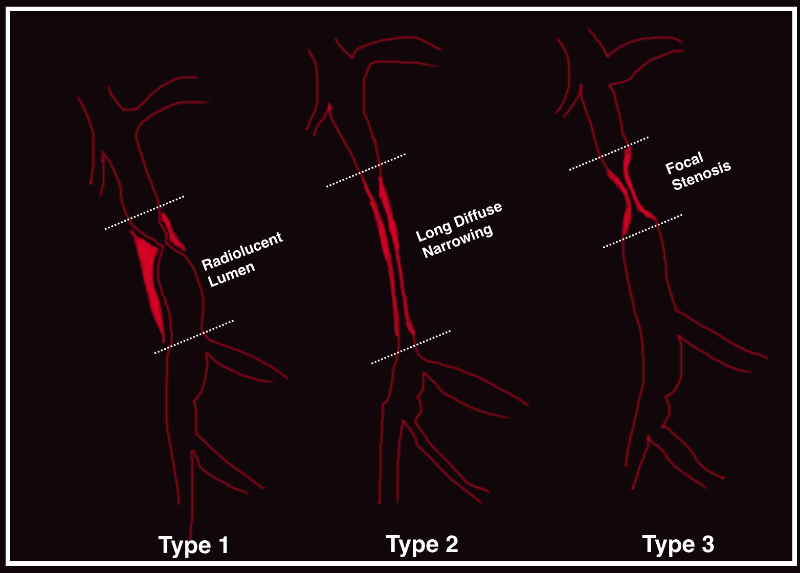Spontaneous coronary artery dissection angiography
|
Spontaneous Coronary Artery Dissection Microchapters |
|
Differentiating Spontaneous coronary artery dissection from other Diseases |
|---|
|
Diagnosis |
|
Treatment |
|
Case Studies |
|
Type 1 Type 2A Type 2B Type 3 |
Editor-In-Chief: C. Michael Gibson, M.S., M.D. [1]; Associate Editor(s)-in-Chief: Nate Michalak, B.A.; Arzu Kalayci, M.D. [2]
Synonyms and keywords: SCAD
Overview
In the past, this disorder was often diagnosed only at the time of autopsy.[1] At present, however, angiography is most often used to diagnose SCAD.[2]
Angiography
Angiographic findings include:
- Type 1: appearance on an angiography involves the presence of two intraluminal streams/lumens separated by a radioluscent flap of intima.
- Type 2: when the dissection plane is deeper in the vessel wall between the media and adventitial layers, formation of a hematoma can result in luminal narrowing which is seen as a stenosis on an angiography.
- Type 3: appearance mimics atherosclerosis. The dissection is typically shorter than that of type 2 (< 20 mm) and may have a hazy appearance.

References
- ↑ Narasimhan, S (2004). "Spontaneous coronary artery dissection (SCAD)" (PDF). IJTCVS. 20 (4): 189–91. doi:10.1007/s12055-004-0084-x.
- ↑ Kamran M, Guptan A, Bogal M (2008). "Spontaneous coronary artery dissection: case series and review". J Invasive Cardiol. 20 (10): 553–9. PMID 18830003.